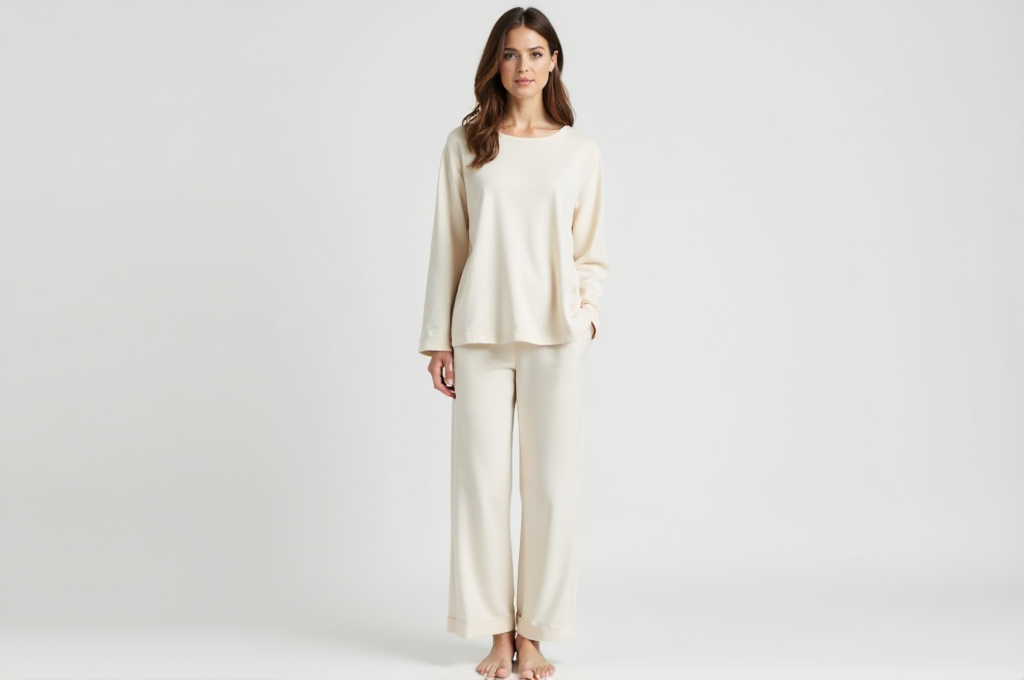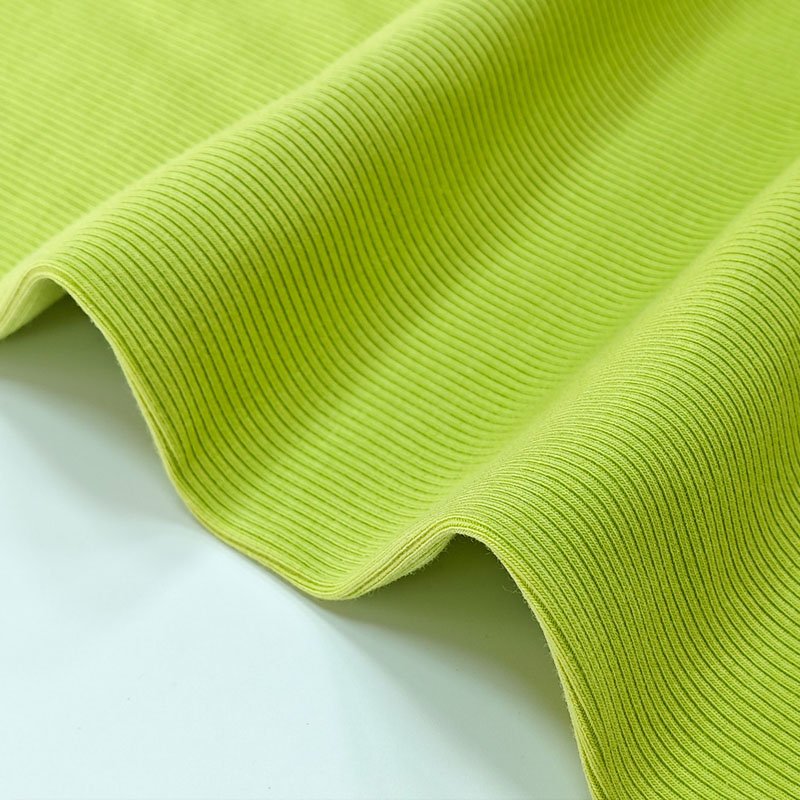- Key Takeaways
- 1. Properties of Modal & Cotton
- 2. Applications of Modal & Cotton
- 3. Environmental Impact of Modal & Cotton
- 4. Cost and Market Availability
- 5. Choosing Between Modal & Cotton
- FAQ

When choosing between fabrics, you often compare their softness, breathability, and environmental impact.
Modal fabric stands out for its silky texture and excellent moisture-wicking properties. You’ll find it softer and more eco-friendly than many other materials. On the other hand, cotton fabric offers natural coziness and versatility. Its breathable nature makes it a favorite for everyday use.
Both fabrics excel in different areas, but understanding their unique qualities helps you make the right choice for your needs. Modal cotton blends combine the best of both worlds, offering softness and durability.
Key Takeaways
- Modal fabric is very soft and keeps you dry. It works well in hot weather and for active clothes.
- Cotton fabric lets air through and lasts a long time. It is great for daily clothes and home items.
- Both fabrics need special care. Modal doesn’t fade or shrink, but cotton needs careful washing to stay nice.
- Pick modal or cotton based on what matters to you, like comfort, strength, or being eco-friendly.
- Choose modal for greener choices and cotton for classic, useful purposes.
1. Properties of Modal & Cotton

Softness and Comfort
Modal fabric’s luxurious softness
When it comes to softness, modal fabric offers a truly luxurious experience. Its silky texture feels smooth against your skin, making it a popular choice for clothing and bedding. This softness remains consistent due to the unique production process, which uses recycled cellulose fibers from beech or birch trees. Unlike cotton, modal maintains its softness even after multiple washes.
In a study comparing modal and cotton fabrics, modal fibers demonstrated superior softness and moisture-wicking capabilities.
Cotton fabric’s natural coziness
Cotton fabric, on the other hand, provides a natural and familiar coziness. Its softness can vary depending on the type of cotton and how it is woven or blended. For example, Egyptian cotton is known for its exceptional softness, while regular cotton offers a more casual feel. Cotton’s versatility makes it a favorite for everyday wear and home textiles.
Breathability and Moisture Management
Modal fabric’s breathability and moisture-wicking
Modal fabric excels in moisture management. It absorbs water 50% more effectively than cotton, ensuring you stay dry and comfortable. This high absorbency allows sweat to evaporate quickly, keeping you cool in warm conditions. Modal’s breathability also contributes to its ability to wick moisture away, making it ideal for activewear and undergarments.
Cotton fabric’s breathability and absorbency
Cotton fabric is highly breathable, allowing air to circulate freely. This makes it a great choice for hot climates or summer wear. While cotton absorbs moisture well, it does not wick it away as efficiently as modal. However, its natural thermal retention can provide comfort in cooler weather, making it versatile for different seasons.
Durability and Longevity
Modal fabric’s resistance to shrinking and fading
Modal fabric stands out for its durability. It resists shrinking, fading, and pilling, even after repeated washing. This makes it a reliable choice for long-lasting garments and textiles. Additionally, modal’s ability to retain dyes ensures vibrant colors over time, enhancing its aesthetic appeal.
| Test Type | Description |
|---|---|
| Tensile Strength | Measures the maximum stress the fabric can withstand when stretched. |
| Color Fastness | Tests the resistance of the fabric’s color to fading under various conditions. |
Cotton fabric’s durability with proper care
Cotton fabric is durable when cared for properly. Washing it in cold water and avoiding harsh detergents can extend its lifespan. While cotton may shrink or fade over time, high-quality cotton fabrics, such as organic or combed cotton, offer better durability. Cotton’s strength makes it suitable for everyday use and heavy-duty applications.
Care and Maintenance
Caring for modal fabric
Proper care ensures that modal fabric retains its softness and durability. You can follow these simple steps to maintain its luxurious feel:
- Washing: Use a gentle cycle with cold or lukewarm water. Avoid bleach and fabric softeners to preserve the fabric’s color and texture.
- Drying: Air drying is the best option to maintain the fabric’s shape. If you use a dryer, select a low-heat setting to prevent damage.
- Ironing: Use a low-temperature setting and iron while the fabric is slightly damp. This prevents any potential harm to the fibers.
- Storage: Store modal items in a cool, dry place away from direct sunlight. This helps prevent fading and keeps the fabric in excellent condition.
By following these steps, you can enjoy the long-lasting quality of modal cotton products.
Caring for cotton fabric
Cotton fabric requires a slightly different approach to care. While it is durable, proper maintenance can extend its lifespan. The table below highlights the key differences in washing and drying requirements for modal and cotton fabrics:
| Aspect | Modal | Cotton |
|---|---|---|
| Washing Temperature | Should not be washed in hot water | Should not be washed in hot water |
| Washing Method | Avoid rubbing | Avoid rubbing |
| Storage | Store in dry places | Store in dry places |
| Detergent Type | Alkaline detergents can damage | Alkaline detergents are safe |
| Wrinkle Resistance | Resists wrinkles better | Requires frequent ironing |
For cotton, you should wash it in cold water to prevent shrinking. Using alkaline detergents is safe, but avoid overloading the washing machine to reduce wear. Cotton often wrinkles, so ironing at a medium to high temperature may be necessary. Storing cotton in a dry place also helps maintain its quality.
Both fabrics have unique care requirements, but understanding these differences ensures your garments and textiles stay in great condition for years to come.
2. Applications of Modal & Cotton

Clothing
Modal fabric in activewear and undergarments
Modal fabric is a favorite for activewear and undergarments due to its softness and moisture-wicking properties. You’ll find it in items like underwear, sleepwear, and sportswear, where comfort is essential. Its elasticity ensures a snug fit, while its ability to absorb moisture keeps you dry during workouts or warm days. This makes modal fabric ideal for those seeking performance and comfort in their clothing.
Cotton fabric in casual and everyday wear
Cotton fabric shines in casual and everyday wear. Its breathability and lightweight nature make it perfect for T-shirts, jeans, and summer dresses. Cotton’s hypoallergenic properties also enhance comfort, especially for sensitive skin. You’ll appreciate its durability, which withstands daily wear and tear, and its ability to regulate body temperature in various climates. These qualities make cotton a reliable choice for your wardrobe staples.
Bedding and Home Textiles
Modal fabric in luxury bedding
Modal fabric elevates your bedding experience with its silky texture and luxurious softness. It offers year-round comfort by wicking away moisture and promoting breathability. You’ll also benefit from its natural wrinkle resistance, which keeps your sheets looking smooth and fresh. Additionally, modal’s sustainable production process makes it an eco-friendly option for those prioritizing the environment.
Cotton fabric in versatile home textiles
Cotton fabric dominates home textiles due to its versatility and durability. From bed linens to towels, cotton provides a cozy and familiar feel. Its ability to withstand frequent washing makes it a practical choice for everyday use. While it may not match modal’s silky texture, cotton’s matte finish and natural softness create a warm and inviting atmosphere in your home.
Specialty Uses
Modal fabric in high-performance products
Modal fabric’s unique properties make it suitable for high-performance applications. Its elasticity and moisture absorption capabilities are ideal for sportswear and undergarments. Beyond clothing, modal fibers are used in healthcare for surgical gowns and masks, offering comfort and a sterile barrier. In the automotive industry, modal enhances seat covers and upholstery with its durability and smooth texture.
Cotton fabric in traditional and artisanal products
Cotton fabric plays a significant role in traditional and artisanal products. You’ll find it in handwoven textiles, quilts, and embroidery, where its natural fibers provide strength and texture. Cotton’s versatility allows artisans to create intricate designs, making it a staple in cultural and handmade goods. Its durability ensures these items last for generations, preserving their beauty and craftsmanship.
3. Environmental Impact of Modal & Cotton

Sustainability of Modal Fabric
Eco-friendly production process
Modal fabric stands out for its eco-friendly production process. Manufacturers derive it from beech trees, which grow quickly and propagate naturally without intensive farming. This renewable resource requires minimal water compared to cotton plants. Additionally, modal production uses a closed-loop process that recycles water and chemicals, reducing waste and pollution. When dyed using safe methods, modal becomes biodegradable, making it an environmentally responsible choice.
Biodegradability and smaller carbon footprint
Modal fabric has a smaller carbon footprint than conventional cotton. Its production consumes less water and fewer resources. Beech trees used for modal grow in sustainably managed forests, further reducing environmental impact. Unlike cotton, which often relies on pesticides, modal production avoids harmful chemicals. These factors make modal a sustainable option for eco-conscious consumers.
Sustainability of Cotton Fabric
Environmental concerns with conventional cotton
Conventional cotton farming raises several environmental concerns. It relies heavily on toxic pesticides, such as aldicarb, which is banned in many countries due to its hazardous effects. These chemicals contaminate water sources and harm surrounding ecosystems. Additionally, cotton farming depletes soil nutrients, leading to erosion and reduced water retention. The high water consumption of cotton farming, often exceeding 20,000 liters per kilogram of fiber, further strains natural resources.
Organic cotton as a sustainable alternative
Organic cotton offers a more sustainable alternative to conventional cotton. It uses 91% less water and produces 46% fewer carbon emissions. Organic farming avoids harmful pesticides, improving soil health and biodiversity. This method also benefits farmers by reducing exposure to toxic chemicals and supporting ethical practices like microfinance. Organic cotton is hypoallergenic, making it a safer choice for individuals with sensitive skin.
Comparative Analysis
Modal fabric’s environmental advantages
Modal fabric offers several environmental advantages over cotton. Its production requires significantly less water and avoids pesticides. The closed-loop process used in modal manufacturing minimizes waste and pollution. Beech trees, the source of modal, grow sustainably and require fewer resources than cotton plants. These factors contribute to modal’s lower carbon footprint and make it a greener choice.
Cotton fabric’s eco-friendly options
While conventional cotton has environmental drawbacks, eco-friendly options exist. Organic cotton, Oeko-Tex certified fabrics, and GOTS-certified textiles provide sustainable alternatives. These options reduce water usage, eliminate harmful chemicals, and promote ethical farming practices. Choosing these alternatives helps mitigate the environmental impact of cotton production.
4. Cost and Market Availability

Pricing Comparison
Modal fabric’s cost factors
The price of modal fabric depends on several factors. You’ll notice that its cost reflects the following influences:
- Agricultural influences: The availability of beech trees, the primary source of modal, impacts production costs.
- Market demand: As demand for sustainable and soft textiles grows, modal fabric prices may rise.
- Global supply chain dynamics: Transportation, labor, and raw material costs in the supply chain also affect modal fabric pricing.
These factors make modal fabric slightly more expensive than conventional cotton. However, its durability and eco-friendly benefits often justify the higher price.
Cotton fabric’s cost factors
Cotton fabric pricing varies based on multiple elements. Key factors include:
- Agricultural conditions: Weather and pest infestations can influence raw cotton availability and cost.
- Geopolitical factors: Trade policies and political instability may cause price fluctuations.
- Consumer demand: The growing interest in sustainable options, like organic cotton, impacts pricing.
Cotton’s widespread cultivation and established supply chains help keep its cost competitive. However, premium varieties, such as Egyptian or organic cotton, can be more expensive.
Availability in the Market
Modal fabric’s accessibility
Modal fabric is gaining popularity worldwide, but its availability varies by region. The table below highlights its market presence and growth drivers:
| Region | Market Share (%) | CAGR (2023-2030) | Key Drivers |
|---|---|---|---|
| North America | > 40% | 6.0% | Increasing demand for soft, breathable, and sustainable textiles. |
| Europe | > 30% | 6.2% | Emphasis on sustainable and eco-friendly textiles. |
| Asia Pacific | > 22% | 8.8% | Growing textile and apparel industry, demand for eco-friendly textiles. |
| Latin America | > 5% | 7.0% | Shift towards sustainable and comfortable textiles. |
| Middle East & Africa | N/A | N/A | Expected growth due to investments in textile manufacturing. |
You’ll find modal fabric more accessible in regions with a strong focus on sustainability and innovation in textiles.
Cotton fabric’s widespread availability
Cotton fabric remains one of the most widely available textiles globally. Its accessibility stems from several factors:
- Agricultural conditions: Cotton grows in many climates, ensuring a steady supply.
- Market demand: High consumer preference for cotton products drives its production and distribution.
- Global supply chains: Established networks of growers, manufacturers, and retailers ensure cotton fabric reaches markets worldwide.
This widespread availability makes cotton a convenient choice for consumers everywhere. Whether you’re shopping for clothing or home textiles, you’ll likely find cotton products in abundance.
5. Choosing Between Modal & Cotton

Based on Comfort and Feel
When to choose modal fabric
Modal fabric offers unmatched softness and moisture-wicking capabilities, making it ideal for hot and humid conditions. Its silky texture feels luxurious against the skin, providing exceptional comfort for items like pajamas, t-shirts, and undergarments. If you prioritize staying cool and dry, modal fabric is the better choice. Additionally, its low-maintenance nature—being machine washable and quick-drying—adds to its appeal for those seeking convenience.
When to choose cotton fabric
Cotton fabric excels in breathability and thermal retention, making it a versatile option for various climates. Its natural coziness suits casual wear, such as T-shirts and summer dresses, while its ability to retain heat makes it a great choice for cooler weather. Cotton’s hypoallergenic properties also make it suitable for sensitive skin. If you value a familiar, breathable fabric for everyday use, cotton is an excellent option.
Tip: Consider the climate and activity level when choosing between modal and cotton for maximum comfort.
Based on Durability and Use
Modal fabric for long-lasting garments
Modal fabric resists pilling, fading, and shrinking, even after frequent washing. Its ability to retain shape and softness over time makes it a reliable choice for long-lasting garments. This durability, combined with its vibrant color retention, ensures your clothing looks and feels new for longer. Modal is perfect for items like activewear and undergarments that require frequent laundering.
Cotton fabric for everyday use
Cotton fabric is known for its strength and longevity, especially when cared for properly. While it may wear out over time, high-quality cotton varieties, such as combed or organic cotton, offer enhanced durability. Cotton’s resilience makes it ideal for everyday clothing and heavy-duty applications like denim or workwear. If you need a fabric that withstands daily wear and tear, cotton is a dependable choice.
Based on Sustainability
Modal fabric for eco-conscious consumers
Modal fabric stands out for its eco-friendly production process. It uses significantly less water than cotton and avoids harmful pesticides. The closed-loop manufacturing process recycles water and chemicals, reducing waste and pollution. Additionally, the raw materials for modal come from renewable sources like beech trees, enhancing its sustainability profile. If you prioritize reducing your environmental footprint, modal fabric is an excellent choice.
Cotton fabric for organic and natural options
While conventional cotton farming has environmental drawbacks, organic cotton offers a sustainable alternative. It uses 91% less water and avoids synthetic pesticides, improving soil health and biodiversity. Organic cotton also supports ethical farming practices, making it a safer and more eco-friendly option. If you prefer natural fibers and support sustainable agriculture, organic cotton is a great choice.
Note: Both fabrics have eco-friendly options, but modal cotton blends combine the best of both worlds, offering sustainability and comfort.
Both modal and cotton fabrics offer unique benefits, making them suitable for different needs. Modal fabric stands out for its luxurious softness, wrinkle resistance, and excellent moisture absorption, which is 50% higher than cotton. You’ll find it ideal for hot weather and travel. Cotton fabric, on the other hand, excels in breathability, durability, and stretchiness, making it perfect for everyday wear and heavy-duty use.
- Key Takeaways:
- Modal resists pilling and fading, ensuring long-lasting vibrancy.
- Cotton provides strength and longevity, ideal for clothing that endures wear and tear.
- Modal offers antibacterial properties and smoothness, while cotton delivers natural coziness.
Your choice depends on your priorities, whether it’s softness and eco-friendliness or versatility and affordability.
FAQ
What is the main difference between modal and cotton fabrics?
Modal fabric offers a silky texture and superior moisture-wicking, while cotton fabric provides natural coziness and breathability. Modal is softer and eco-friendlier, whereas cotton is more versatile and widely available. Your choice depends on your priorities, such as comfort, durability, or sustainability.
Which fabric is better for sensitive skin?
Both modal and cotton fabrics are suitable for sensitive skin. Modal’s smooth fibers reduce irritation, while cotton’s hypoallergenic properties make it a safe option. If you prefer a softer feel, choose modal. For a natural and familiar texture, cotton works well.
Are modal fabrics more expensive than cotton?
Yes, modal fabrics are generally more expensive due to their eco-friendly production process and luxurious feel. Cotton fabrics, especially conventional types, are more affordable. However, premium cotton varieties, like organic or Egyptian cotton, can cost as much as modal.
Which fabric is more durable for everyday use?
Modal fabric resists shrinking, fading, and pilling, making it ideal for long-lasting garments. Cotton fabric, when cared for properly, also offers excellent durability. For heavy-duty applications like denim, cotton is a better choice. Modal works best for items requiring frequent washing.
Can you mix modal and cotton fabrics?
Yes, modal and cotton blends combine the best qualities of both fabrics. These blends offer enhanced softness, durability, and moisture-wicking. You’ll find them in clothing, bedding, and home textiles, providing a balance of comfort and practicality.


